Lecture titles
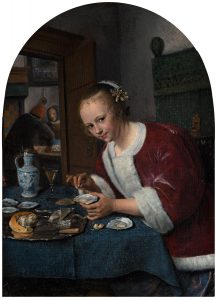 I. Saints and Sinners: Women in the Mauritshuis
I. Saints and Sinners: Women in the Mauritshuis
Women have played many different roles in art from Mary, the mother of Jesus, perhaps the holiest of women as portrayed by such artists as Rembrandt to the brazen hussies depicted by Jan Steen. Using some of the masterpieces of the Mauritshuis the lecturer will explore not only the roles played by women but also introduce you to some of the artists and the kinds of works they produced and the styles they used. This lecture is always fun as well as educational!
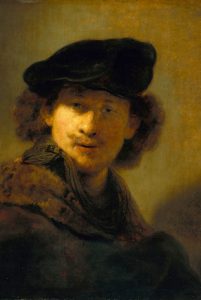 II. Rembrandt: Bohemian or Businessman, Romantic or Rebel?
II. Rembrandt: Bohemian or Businessman, Romantic or Rebel?
Rembrandt is considered by many to be Holland’s greatest artist and the equal of Mozart, Shakespeare and Michelangelo. Unlike van Gogh, the other great Dutch artist, Rembrandt has not left much written material explaining his views on art, but what he has left is a unique visual autobiography in his self-portraits which he did from the age of 20 to 63, the year of his death. This lecture will use the self-portraits as a thread through his life and with his other masterpieces explore the man and what, why, and how he painted. Was he indeed a businessman or bohemian, rebel or romantic?
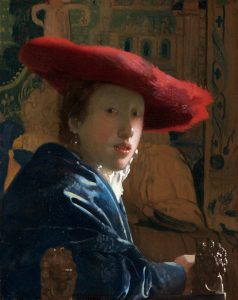 III. Mystery of Johannes Vermeer, Master of Light, Colour and Harmony
III. Mystery of Johannes Vermeer, Master of Light, Colour and Harmony
The poetry of Vermeer’s paintings is immediate and recognizable, yet almost impossible to describe and explain. What is it that holds the viewer before a beautiful young girl in an exotic turban, a woman replying to a letter, or a couple at an intimate music lesson, It is not the narrative, for there is hardly any, but something more universal. In Vermeer’s hands, the stillness of a quiet street, a woman’s concentration on lacemaking, or the soft light that gently illuminates a scholar in his study become at once heightened and familiar, reminding us of fleeting moments in our own lives. Through his sensitivity to light, colour and composition, Vermeer transforms such ordinary subjects into expressions of perfect balance and harmony
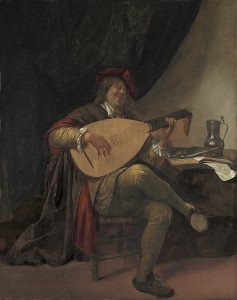 IV. Jan Steen: Master Storyteller
IV. Jan Steen: Master Storyteller
One of the best-known artists of the Dutch Golden Age, Jan Steen was a born storyteller – famous for his humorous depictions of everyday life but that is not all he did. There are also more serious subjects to be found among his oeuvre. Through looking at his serious and less serious works we will see that he was a first-rate painter with an outstanding technique. Lecture
V. Holland’s Golden Age Revealed, Introduction to the Art of 17th century Holland:. Series of five lectures which can be given separately.
The Golden Age was a period in Dutch history, roughly spanning the 17th century, in which the Dutch were a major world power and leaders in trade and science but also in art.. The paintings produced by Dutch artists are considered some of the greatest works of art in the world. This series of lectures will not only introduce you to the art of this dynamic period but will also talk about the history and culture that brought this art to fruition.
The course will be given in five sessions but can also be done separately. It is also suitable as a study day. Each lecture will concentrate on one of five categories of art which were produced: History, Portraits, Genre, Landscape, and Still life and Architectural. As well as talking about the artists, their subjects and style, we will explore what caused this explosion of art and why different kinds of painting such as Genre, and Landscape became such specialities of the Dutch. We will then set them in their historical and cultural background. Not only the great masters Rembrandt, Vermeer and Frans Hals will be discussed but many of the minor masters as they have come to be called will also be included. We will see that they are in fact very talented in their own right.
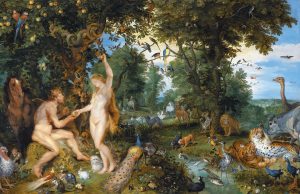 VI. Rubens & Brueghel: A Working Friendship
VI. Rubens & Brueghel: A Working Friendship
Peter Paul Rubens and Jan Brueghel the Elder were the most successful painters in early 17th century Antwerp. Both deeply committed and masterful, they each ran hugely productive workshops. To further their artistic development, the two artists spent a number of years in Italy, where they also became acquainted with international rules of diplomacy. A special bond developed between them. Rubens served as Brueghel’s secretary by writing his Italian letters and he was godfather to the latter’s children. Few are aware, however that alongside this close friendship, the two men also formed a fruitful working partnership. Each specialising in a chosen field, they joined their artistic forces to create phenomenal paintings together. This partnership is what we will explore in the lecture.
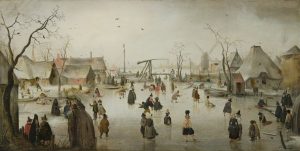 VII. Snow and Ice, Holland Frozen in Time
VII. Snow and Ice, Holland Frozen in Time
Whereas nowadays Dutch winters tend to be rather mild, in the 17th century there were lengthy periods of frost. Unfortunately old-fashioned Dutch winters with severe frosts, thick layers of snow and frozen lakes and canals with everyone skating have become rare. But these Dutch winters of bygone times were captured in paintings by the great masters of the Dutch Golden Age. In the comfort of a warm interior I would like to show you how this typically Dutch genre developed and talk about some of the famous works by artists such as Hendrick Avercamp, who specialised in winter landscapes, but also Jacob van Ruisdael, Jan van Goyen and even Rembrandt who showed the traditional Dutch landscape at its coldest. Lecture
VIII. Carel Fabritius, The Link Between Rembrandt’s Brushstroke and Vermeer’s Light?
Many art historians consider Fabritius as the link between Rembrandt and Vermeer. His early paintings reflect the style of his teacher Rembrandt while his later work is far lighter and may have been a source of inspiration for Vermeer. Perhaps because of his untimely death at the age of 32 in the great explosion in Delft in 1654, Fabritius is less well known than Rembrandt and Vermeer. He is undoubtedly one of the most ingenious and versatile painters of the Dutch 17th century. Perhaps he even would have surpassed them if he had lived.
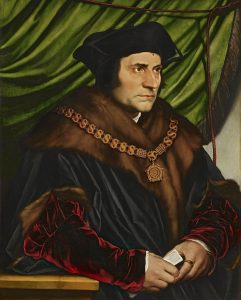 IX. Hans Holbein the Younger – Portraitist of the Renaissance
IX. Hans Holbein the Younger – Portraitist of the Renaissance
In this lecture we will explore this phenomenal artist who through his portraits esp. of Henry VIII, his wives and courtiers have done so much to determine our image of this turbulent time. We will examine the life and career of this 16th century ex-pat who travelled to many countries in pursuit of his career. But what makes his work so special? Why are his portraits so intriguing and fascinating for so many people? Is it his unbelievably refined technique and the beautiful use of colour which he used to make his paintings come to life? Or is it his talent to reveal the characters of these people so mercilessly? His portraits of Swiss Citizens, famous scholars. traders and Henry VIII and his marriage candidates and courtiers show us people of flesh and blood: powerful personalities, erudite, good natured. industrious or vulnerable, but also people who radiate cunning and deceit.
 X. Jan Steen’s Holidays
X. Jan Steen’s Holidays
Jan Steen, one of best loved artists of the Dutch 17th century, is known for his rollicking scenes of everyday life – each one telling a story. He has also given us some charming scenes of Dutch holidays. He was the first to concentrate on the portrayal of these activities. This light-hearted talk will tell of the Dutch holidays painted by Steen, St. Nicolas, regarded by many as the quintessential Dutch holiday, celebrated on December 5th and Twelfth Night celebrated on January 6th. St. Nicolas has always played a very important role in Dutch life and Jan Steen has interpreted scenes of the Feast of St. Nicolas in many ways, traditionally dedicated to Dutch children. He also painted Twelfth Night more than once capturing the revelries as only he could. This talk is less than one hour but can be expanded.
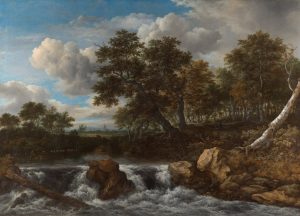 XI. Jacob van Ruisdael, Master of Landscape
XI. Jacob van Ruisdael, Master of Landscape
One of the most important contributions that Dutch 17th century artists made to art is the development of the landscape. Edward Norgate, an English visitor to Holland in the 17 century wrote landscape is a word borrowed by us from the Dutch, fittingly enough because landscapes is their own child. Jacob van Ruisdael is considered the greatest 17th century Dutch landscape artist. He looked at his contemporary environment but he also used his imagination to create dramatic scenes producing some of the most astounding landscape art works ever produced. His work influenced later artists. ‘It haunts my mind and clings to my heart’ wrote the English landscape artist John Constable after viewing a work by Jacob van Ruisdael.
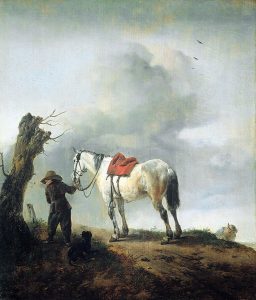 XII. On Horseback, The World of Philip Wouwerman
XII. On Horseback, The World of Philip Wouwerman
Philips Wouwerman (1619-1668) is currently considered the most successful painter of horses of the Dutch Golden Age. Relatively unknown today, he was more famous in his own time than Rembrandt, his paintings were eagerly sought after by burghers and princes throughout Europe. His work found its way into important royal collections that now form the core of important international museum collections. Catherine the Great, for example, had more than forty paintings by Wouwerman in her collection. Horses often take centre stage in his work. No other painter captured the world of the horse with as much variety and affection, the grey horse became his ‘signature’. But he also painted scenes of everyday life, religious subjects, and landscapes evolving into one of the great landscape painters of his age with his brighter colours, complex compositions and elegant style.
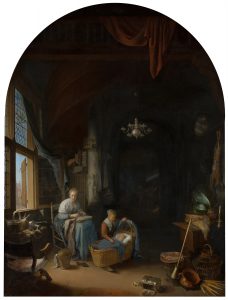 XIII. Gerard Dou, Rembrandt’s First Student and Master Fine Painter
XIII. Gerard Dou, Rembrandt’s First Student and Master Fine Painter
Gerrit Dou was one of the most highly esteemed Dutch painters of the 17th century, celebrated for the meticulous technique and illusionistic effects he created with his fine and delicate technique. Rembrandt’s first pupil Dou was lauded at an early age as a model for other painters. He is considered the founder of the Leiden school of fijnschilders (fine painters). One of his works rather than a Rembrandt was given to Charles II in 1660 by the Dutch Government as part of the Dutch Gift. His works were sought by collectors throughout Europe fetching extremely high prices well in the 18th century. By mid 19th century Dou’s reputation had fallen. However his work is now re-evaluated and his artistic achievement is once again recognised.
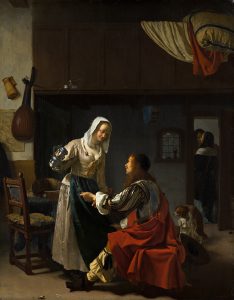 XIV. Frans van Mieris, Painted Perfection
XIV. Frans van Mieris, Painted Perfection
Frans van Mieris is one of the best-known Dutch ‘fijnschilders’ fine painters who were known for their smooth, meticulous style and their near perfect rendering of materials. His teacher, Gerard Dou, called him his Prince of Pupils because of his astounding ability to paint in the fine style making fabrics come to life in a perfect imitation of reality. He did interiors, scenes from daily life and portraits, all capturing human interactions rife with double meanings. Like his teacher, van Mieris was renowned at home and aboard. Although falling out of favour at end of 19th century, he and the other ‘fijnschilders’ once again are receiving the appreciation they deserve.
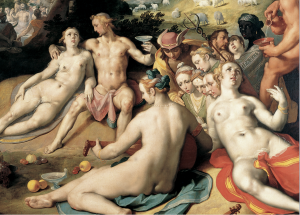 XV. Intimacies and Intrigues! History painting*
XV. Intimacies and Intrigues! History painting*
As Tolstoi said: ”Art is a human activity having for its purpose the transmission to others of the highest and best feelings to which men have risen.” This certainly describes the purpose of history paintings which can be defined as a painting in which the human figure plays the main role and subject matter is religious, mythological, historical, literary or allegorical This category was considered the highest category of art. So many artists aspired to do this such as Rembrandt and Vermeer. In the first lecture we will explore who, how and why these were painted
 XVI. Who’s Who? Portrait painting*
XVI. Who’s Who? Portrait painting*
Portraits are a very special phenomenon in 17th century Holland Never before were so many portraits produced, but the booming economy created a wealthy burger class who were proud of what they had achieved and wanted their portraits done. Dutch artists captured these people and the these works have become masterpieces – just think of the Night Watch..
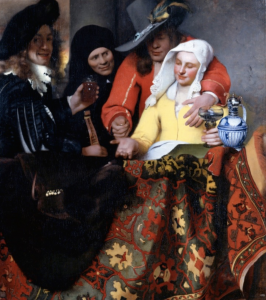 XVII. Reality Show or Illusion? Genre painting*
XVII. Reality Show or Illusion? Genre painting*
Genre paintings refer to scenes of everyday life, a sort of ´tableau vivant´ and are probably one of the most popular categories of Dutch 17th century art. In this talk we will also learn that there is much more to the eye than just a scene of everyday life. Symbolic meanings, double entendres and moral messages were included in these seemingly innocent compositions.
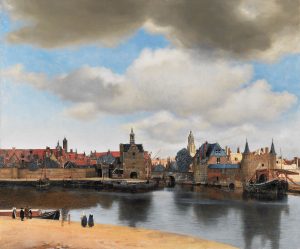 XVIII. Mirrors of Reality! Landscape painting*
XVIII. Mirrors of Reality! Landscape painting*
The development of landscape painting in Holland must be counted among one of the most prominent contributions to the history of European art. In fact, the Dutch are considered to have started the naturalistic landscape style.
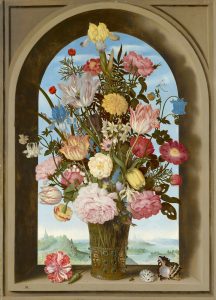 XIX. Objects of Desire! Still life and Architectural Painting*
XIX. Objects of Desire! Still life and Architectural Painting*
These two specialties of Dutch 17th century art with their attention to the representation of different textures and illusionism are some of the most admired works of this period. Showing the originality of Dutch painters, we will also explore the symbolism and the ability of art to triumph over nature.
*Each lecture concentrates on one of five categories of art.